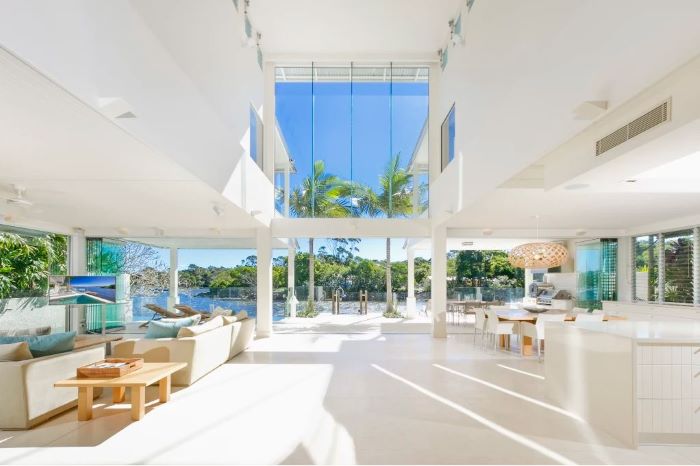Property values have started to fall in some of the most sought-after regional hotspots of the lockdown era, new figures show.
Rising interest rates and a reopening of major cities this year have ended the growth spurt of property markets in beach destinations.
House values in the Richmond-Tweed region of northern NSW, which includes Byron Bay, Ballina and Lismore, have fallen by 11.7 per cent over the three months to October, CoreLogic data shows.
House values in the area rose by more than 50 per cent during the height of COVID-19 restrictions, but have fallen nearly 16 per cent since April, the research house found.
It was followed by the Southern Highlands and the Shoalhaven, where house values are down 7.1 per cent in three months, and the Sunshine Coast, which dropped the same percentage.
The Gold Coast, the Illawarra and Newcastle and Lake Macquarie fell at least 6 per cent each, while falls of at least 4 per cent were recorded in Geelong, the Latrobe-Gippsland region and Ballarat.
CoreLogic head of Australian research Eliza Owen said the sharper falls have been in areas where prices have been more volatile.
She said knowledge workers who could work remotely had been able to move to sea-change and tree-change destinations in the last few years, adding more recent data suggests net regional migration has fallen since its pandemic peak although remains higher than pre-pandemic levels.
“The areas like Richmond-Tweed, the Southern Highlands and Shoalhaven, and the Sunshine Coast where we’ve seen sharp quarterly declines, are coming off the back of very strong upswings – upwards of 40 per cent in most cases,” she said.
“This is just a correction that reflects the extremes in what we’ve seen in the interest rate.”
The price falls in northern NSW had been compounded by extreme weather this year, she said.
Although the price falls might seem like a relief to locals, they came at the cost of higher mortgage rates, and the outlook for regional property prices would depend on how high interest rates rise.
In Byron Bay, Fuller & Co director Scot Fuller said the market had a slower period mid-year as buyers adjusted to rising interest rates, and some holidaymakers chose to visit Europe this winter now international borders have opened.
He has “definitely seen a pullback in prices” after the extraordinary rises in the COVID-19 period of 5 per cent to 15 per cent depending on the location, but said conditions are starting to recover and stabilise even as buyers have more choice.
“It is good to have got some stock under your belt to show buyers,” he said.
“They’re having time to think about the property they want to purchase.”
Further north, Tom Offermann, of the eponymous Noosa real estate agency, highlighted a two-speed market.
“We are still breaking new ground in price at the premium end of the market,” he said.
“There is quite a backlog of buyers that intend to own property here.”
But some of the non-prestige homes have had negotiations of up to 10 per cent on price, he said.
“Quite a bit of the heat has gone out of the market, the urgency of buyers. There are less people at auctions, and property is still selling.”
There are very few homes for sale and still a lot of people moving from interstate, although some of the holidaymakers who spent the last couple of winters in Noosa did travel to Europe this year, he said.

Noosa’s price record was smashed last week when a $27 million Noosa Heads waterfront property settled to Victorian-based buyers.
Offermann expects a flattening of the market for six or 12 months, but a steady uplift in value over time.
“There is a lot of wealth in this country that has been created through the last 10 years,” he said.
“The next six to 12 months will be a buying opportunity for those who felt they missed the boat. They are not going to be buying at a huge discount, but they will have less competition.”
Article source: www.brisbanetimes.com.au
from Queensland Property Investor https://ift.tt/sTXtFZg
via IFTTT